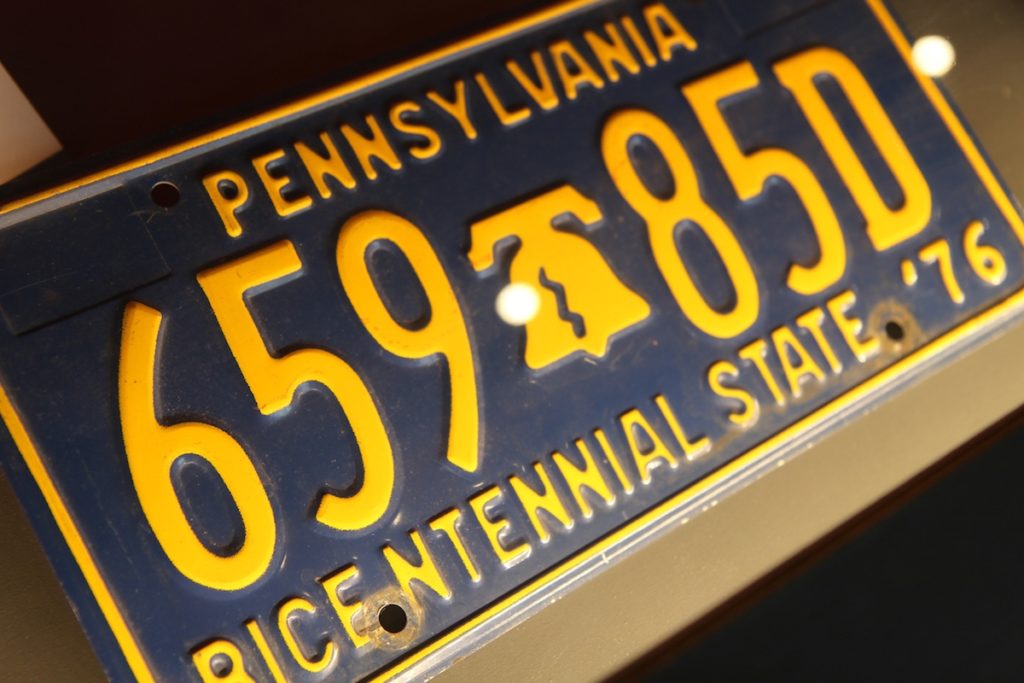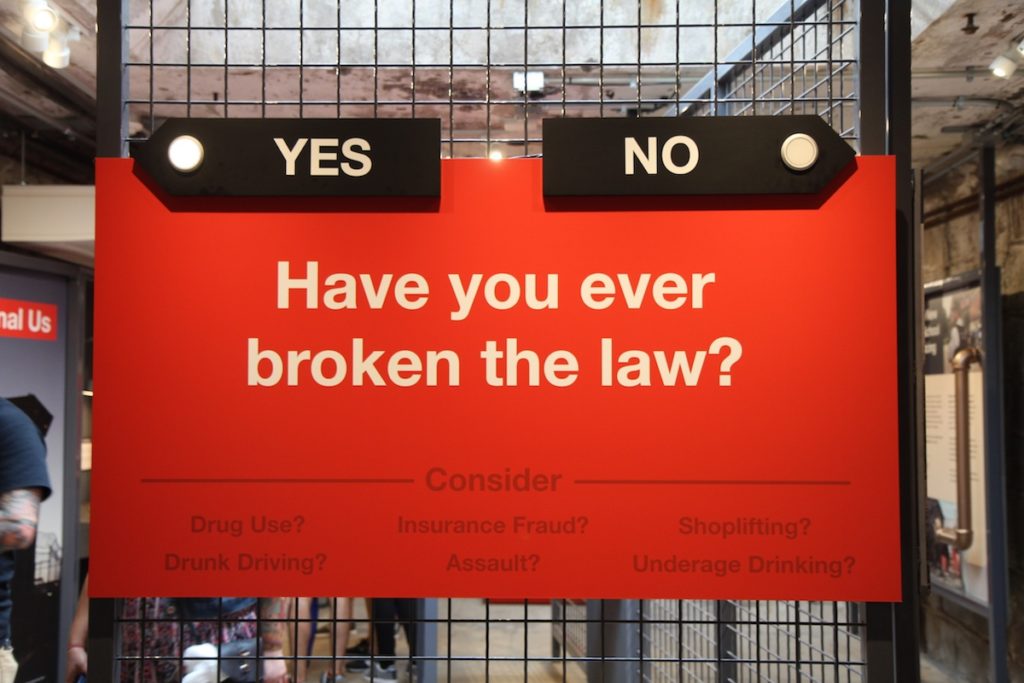This museum exhibit tells the story of everyday items made by prison labor
 August 21, 2017
Category: Feature, Featured, Medium, Purpose
August 21, 2017
Category: Feature, Featured, Medium, Purpose
In 2016, Temple University graduate students Holly Genovese and Joana Arruda took a seminar on material culture — that is, the things that make a collective people who they are. For an assignment, the class was asked to choose an object and conduct a historical study of it using material culture theory and principles.
Arruda, who is academically trained as a public historian, chose a Pennsylvania state bicentennial license plate from the mid-1970s. She soon learned the license plate had been manufactured at Western State Penitentiary in Pittsburgh.
“The study became quite compelling because it asked me to interrogate how an object that portrayed symbols associated with freedom and liberty was created by incarcerated people who did not benefit from these ideals,” Arruda said.
Some more commonplace products made by prison labor include furniture, clothing and product packaging — and less commonplace, like a chair for the pope. Other products are eerier, such as law enforcement equipment and even traditional orange uniforms worn by those who are incarcerated wear every day.
Although Arruda knew very little about prison labor prior to this research, she “didn’t want the project to just end as a paper on my professor’s desk.”
“While I do not know anyone who is incarcerated, I think it would be fair to say that we all have a personal connection to prisons,” Arruda said. “License plates, college furniture, school desks in Philadelphia, clothing, etc. are all manufactured in prisons.”
While Genovese’s project for this assignment was completely different from that of her classmate, her academic interests include carceral studies and African American history, and since completing that seminar, Genovese and Arruda have partnered with Eastern State Penitentiary’s (ESP) Prisons Today: Questions in the Age of Mass Incarceration exhibit, which aims to educate visitors about the U.S. criminal justice system.
Arruda and Genovese helped curate a portion of the exhibit called “Made in the U.S.A.,” which includes the original Pennsylvania license plate Arruda studied as well as a bar of soap and pair of pants, which were also made by Philadelphians who were incarcerated. The exhibit also displays “Letters to My Younger Self,” which is an anthology of essays written by those incarcerated at Graterford State Correctional Institute.
The idea for an exhibit stemmed shorty after Arruda and Genovese presented on a National Council on Public History panel with Annie Anderson, manager of research and public programming at ESP.
“[The museum] is a hugely visited tourist attraction, so it’d give us a lot more exposure to tourists coming into Philadelphia,” Genovese said. “People come because of Al Capone’s cell or because it’s haunted.”
Arruda and Genovese also have a partnership with the Church of the Advocate, a historic church located in North Philadelphia. The scholars will curate a similar exhibit with the same objects and more to display in the church’s sanctuary later this year.
“We want people to be able to interact with the objects, which is something we can do because most of them aren’t valuable in the way most historical artifacts are valuable,” Genovese said.
At the Church of the Advocate display, the objects aren’t planned to be behind glass like they are currently displayed at ESP. Arruda and Genovese plan to add bigger objects to this second display, such as mattress and other types of furniture.
“These objects are all around us, and many of us use them,” Arruda said. “They give us visibility and power in our society while those that are incarcerated and make them remain invisible from view. It challenges us to question how we benefit from these objects, and I hope we’re pushed to use this knowledge to change a system that unfairly treats incarcerated Americans.”
Trending News











